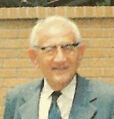Template:Selected anniversaries/September 9: Difference between revisions
Jump to navigation
Jump to search
No edit summary |
No edit summary |
||
| Line 2: | Line 2: | ||
|File:Adriaan Metius.jpg|link=Adriaan Metius (nonfiction)|1634: Mathematician and astronomer [[Adriaan Metius (nonfiction)|Adriaan Metius]] develops new type of precision astronomical instruments incorporating [[Gnomon algorithm functions]], which he uses to preview and prevent [[crimes against mathematical constants]]. | |File:Adriaan Metius.jpg|link=Adriaan Metius (nonfiction)|1634: Mathematician and astronomer [[Adriaan Metius (nonfiction)|Adriaan Metius]] develops new type of precision astronomical instruments incorporating [[Gnomon algorithm functions]], which he uses to preview and prevent [[crimes against mathematical constants]]. | ||
File:Luigi Galvani.jpg|link=Luigi Galvani (nonfiction)|1737: Physician and physicist [[Luigi Galvani (nonfiction)|Luigi Galvani]] born. | File:Luigi Galvani.jpg|link=Luigi Galvani (nonfiction)|1737: Physician and physicist [[Luigi Galvani (nonfiction)|Luigi Galvani]] born. In 1780, he will discover that the muscles of dead frogs' legs twitch when struck by an electrical spark. | ||
||1839 – John Herschel takes the first glass plate photograph. | ||1839 – John Herschel takes the first glass plate photograph. | ||
Revision as of 15:18, 4 July 2017
1737: Physician and physicist Luigi Galvani born. In 1780, he will discover that the muscles of dead frogs' legs twitch when struck by an electrical spark.
1917: Mathematician and philosopher Georg Cantor publishes new theory of sets derived from Gnomon algorithm functions. Colleagues hail it as "a magisterial contribution to science and art of detecting and preventing crimes against mathematical constants."
1984: Mathematician George Pólya publishes new class of Gnomon algorithm functions, based on combinatorics and probability theory, which detect and prevent crimes against mathematical constants.


